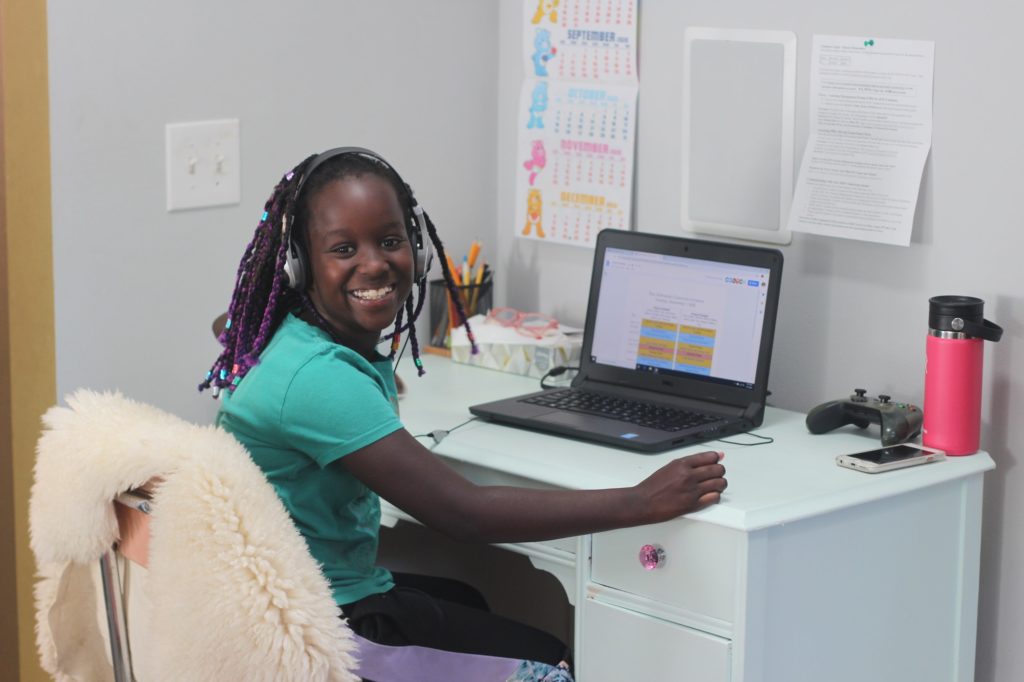Technology has dramatically evolved in 2020! With the need for advanced distance learning tools, we have been introduced to new and innovative technologies that have completely transformed what we now know as the “new normal” for education.
UDT CTO, Daniel Rodriguez and Lenovo Technical Client Advisor, Craig Ewell gave us a look into the advantages and challenges of distance learning and what they think the future holds for education technology:
What software is best for providing digital curriculum & tools to engage with students?
Craig: Integrating platforms like Google creative suite, Microsoft Teams, Exploros, Adobe Spark, Lanschool, and many others can make curriculum very interactive and engaging for students. The best software tools should align with current curriculum standards and should help address such obstacles like how to keep subjects engaging and immersive? How do you expand and incorporate current industry leading trends such as AR/VR? How can these tools help me support a Hybrid teaching model while maintaining curriculum constancy between the two environments? Because we are working on a limited time span, you will need to find software that that is easy to deploy and has a minimal learning curve for end-users. No matter your options, your priority shouldn’t just be solving the known challenges today, but also help address future ones that might arise as well.
How do you see distance learning technology evolving to be effective in the long-term?
Daniel: In the past, conferencing and collaboration technology would come at a hefty price point. Today, and even more so into the future, these same technologies can be consumed at little to no cost to the end user. This creates a usage model that can be predictable and easily deployed to ensure a ubiquitous engagement and collaboration utility that can be consumed on demand regardless of use case. This ensures these technologies long term viability and accessibility for educators and student well into the future.
How do you address the increase in endpoint and cybersecurity threats?
Craig: Addressing the increase really starts with understanding current infrastructures and what we are used to seeing on K-12 campuses. Schools had most of their endpoints on campus and in general had more control over their security and networks. How will we secure these endpoints while learning virtually now?
Using Robust security tools such as Absolute and Sentinel One that offer such features as Geofencing, in depth analytics that can track and stop real time threats and expose vulnerabilities is just one example of the great software available to address these security issues and many more.
The goal is to take typical endpoint security from what was normal at school to what is doable at home and other remote locations and to increase the IT Admins ability to limit the threats and capabilities of these endpoints.
What kind of technology can educators use to build social skills while distance learning?
Daniel: Social and emotional skill development is incredibly important in early learners and are best developed when students can interact with each other in the physical world. But what happens when we need to develop these skills over distance? In many ways, we use mixed reality and virtual reality to simulate the physical world to create and deliver experiences. We believe that educators can use both of these immersive technologies to create a deeper understanding, and a more hi-fidelity engagement for students. We can immerse students in virtual classrooms and playgrounds, create empathy in students for others, and help create a sense of belonging even though we may be many miles apart.
How do you think distance learning is affecting students’ learning and understanding in comparison to in-person education?
Craig: Students are resilient and some even know how to use computers better than most of us. When getting into remote environments, we have to look at other factors like what are they actually missing out on and what new factors come into play. How is this effecting students socially? How do we make sure we are providing additional equity and equality across the board? How do we address internet issues if we are in a rural community and it’s not the strongest connection here? We need to be cognizant that are we being inclusive in these issues. The great thing is that we can address these issues and a whole new set of issues that are coming with this new environment. Being patient and addressing issues at a 1:1 level and ensuring there are no lapses in education is key. Everyone will have to adapt to what a normal education is now and how that’s best managed.
How are technology makers creating resources that balance being user-friendly and technologically effective?
Daniel: Technology companies are working to embed collaborative technologies in everyday smart devices such as Alexa or Google powered speakers and screens, as well as deeply integrated experiences in our tablets and phones. These platforms create significant equity for user access and competence, which in turn allows the technology to be effective in many existing and new use cases.
How do you manage content filtering for at-home device use?
Craig: Now that we have moved from a controlled environment such as onsite at a school, we are opening up our devices to more vulnerabilities and attacks. Content filtering allows you to eliminate security risks on unprotected sites and protects from attachments as well. Content filtering is needed for security but also allows students to stay engaged and focused. Ensuring people are aware of what to and what not to click on is imperative considering the #1 vulnerability is the end user. How do you describe internet security to an elementary student vs a high school student? This will be integral when educating students and teachers on security and implementing the correct content filtering software.
How is distance learning technology being made with student age groups and needs in mind?
Daniel: Different age groups require different learning models and environments in order to be effective. Distance learning technology companies understand this and are working to provide the tools necessary such that early learners can be guided through a learning experience online without distraction or diversions. More advanced and collaborative learning requires fewer “guard rails” and can allow for learners to have access to all kinds of learning resources simultaneously and spontaneously which in turn creates deeper more meaningful connections to learning, and excitement and engagement beyond the traditional learning environment.
What is the best way to deploy and service endpoints, while minimizing physical contact?
Craig: The best solution depends on what is most important to you, your district, and your current environment. The key is to ensure you are pairing up with great partners that can provide deployment services such as imaging, configurations, autopilot enrollment etc. and even delivery directly to your end users. Lenovo has taken this model to heart, by offering our customers a wide variety of services that can help elevate these concerns, manage the entire lifecycle of our endpoints, and ultimately better prepare you for the future.
The biggest uphill battle is being able to adapt with the times and make that transition smooth. Another important thing to consider is not only how you will deploy these endpoints, but also how you will be addressing service needs of the endpoint such as replacing hardware and basic IT servicing that cannot be addressed by an onsite IT department. Institutions will need to implement tools and software that can help reduce downtime by providing advanced remote diagnostics. Additionally, it is very important that institutions expand services not only onsite to teachers and faculty but to students and parents, they should find the resources easy to access and use.
How do you see distance learning technology evolving in the future?
Daniel: Engagement has always been a key benchmark for educators to help ensure student performance both academically and behaviorally. The challenge with traditional distance learning technology is that we can be present, but not engaged. These technologies will need to evolve to better engage the user by simulating traditional spaces, create greater equity in service delivery, and allow for ad-hoc engagement opportunities for students to work in groups and teams while continuing to be present in the broader teaching and learning moments.



